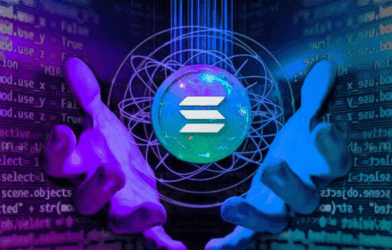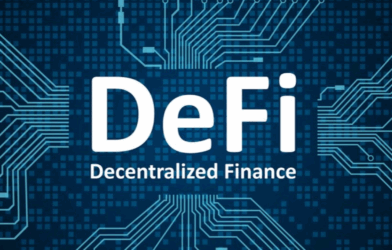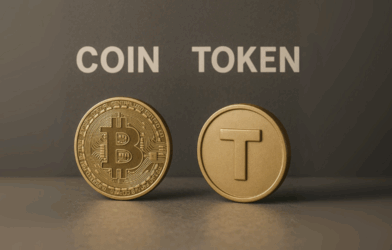Subtotal $0.00
The world of crypto has evolved a great distance from the Bitcoin beginnings. We no longer have one blockchain—now we have hundreds. Ethereum, Binance Smart Chain, Solana, Avalanche, Polkadot, Cosmos, Cardano, and dozens more are all creating ecosystems of apps, tokens, and communities. This barrage of innovation is thrilling, but it raises a significant problem: these blockchains usually don’t communicate with one another.
That is where cross-chain technology enters the picture. Enabling various blockchains to interact with one another and move value, cross-chain solutions are building the path for a more integrated and efficient crypto future.
The Problem: Blockchain Silos
Currently, the majority of blockchains exist in isolation.
- If you own Ethereum, you cannot use it directly on Solana.
- If you need to transfer tokens from Binance Smart Chain to Avalanche, you must use special equipment.
- Every blockchain has its own standards, rules, and tokens.
This results in a fragmented system where liquidity, applications, and users are stuck in isolated networks. For crypto to really scale and achieve mass adoption, these “islands” require bridges.
Cross-Chain Bridges – The First Step
Cross-chain bridges are instruments that enable assets to be transferred between blockchains. If you wish to use ETH on Binance Smart Chain (BSC):
- You lock your ETH in an Ethereum smart contract.
- A wrapped form of ETH (such as “BSC-ETH”) is minted on Binance Smart Chain.
- When you’re finished, you can return it, and your original ETH is unlocked.
Common examples are Wormhole, Multichain, and Portal Bridge.
Advantages:
- Facilitate liquidity to move between blockchains.
- Provide users with choice to use assets wherever fees are lower or apps are superior.
Disadvantages
- Security risks: Some bridges have been compromised, causing billions in losses.
- Complexity: Most bridges involve multiple steps and aren’t for novices.
Whereas bridges address immediate issues, they’re simply the start of actual interoperability.

Interoperability – The Bigger Vision
Interoperability is more than just transferring coins. It’s about getting blockchains natively to understand each other.
Picture this:
- A smart contract on Ethereum firing an event on Solana without involving a third-party bridge.
- A Polygon DeFi app being capable of borrowing liquidity instantaneously from Avalanche.
- NFTs minted on one blockchain being accessible in a game or metaverse on another.
Trailblazing projects:
- Polkadot – its focus is on bridging several blockchains (parachains) under one network.
- Cosmos – leverages the Inter-Blockchain Communication (IBC) protocol to enable blockchains to communicate with each other.
- LayerZero – a protocol that facilitates light-weight cross-chain communication between dApps.
The end vision is a network of interconnecting blockchains—a real multi-chain internet of value.
Multi-Chain Ecosystems – The Future of Web3
The future of crypto probably isn’t domination by a single blockchain that dictates to all the others. Rather, it’s domination by a multi-chain ecosystem where:
- Every blockchain excels at something (Ethereum at security, Solana at speed, Polygon at scalability).
- Users can shift assets and engage across chains with ease.
- Apps (dApps) go chain-agnostic—you won’t have to know or care what blockchain you’re operating in the background.
- It’s like the internet itself: you don’t worry about which server your site is running on—you just access. Likewise, the future of crypto will render the chain invisible to the mass user.
Obstacles Along the Way
Promising though it is, cross-chain tech has challenges:
Security: Bridges have been a popular target for hacks. Securing them is essential.
Standards: As the internet required shared protocols (such as HTTP), blockchains require global standards for communication.
User Experience: Asset transfers between chains are confusing. For widespread adoption, it must be as easy as swiping a card.
Regulation: Cross-chain transactions create new compliance and monitoring issues.
Last Thoughts
Cross-chain tech is not a buzzword—it’s crypto’s ticket to its full potential. Bridges are where we start, interoperability is where we go next, and a multi-chain world is the endgame.
You won’t be wondering, “Is this application on Ethereum or Solana?” in the future. Just as you don’t wonder which server your email lives on, you’ll just use crypto apps with ease on any blockchain.
Tomorrow’s winners won’t be isolated blockchains—they’ll be networks, protocols, and applications that get everything to collaborate.
✅ Fast Summary
Bridges: Transfer tokens between blockchains (useful but dangerous).
Interoperability: Actual cross-chain messaging and smart contract interaction.
Multi-Chain Ecosystem: Web3 universe where blockchains collaborate behind the scenes.










Tnews
Your sport blog is simply fantastic! The in-depth analysis, engaging writing style, and up-to-date coverage of various sports events make it a must-visit for any sports enthusiast.
Tnews
Whether it\'s breaking news, expert opinions, or inspiring athlete profiles, your blog delivers a winning combination of excitement and information that keeps.
Tnews
The way you seamlessly blend statistical insights with compelling storytelling creates an immersive and captivating reading experience. Whether it\'s the latest match updates, behind-the-scenes glimpses.